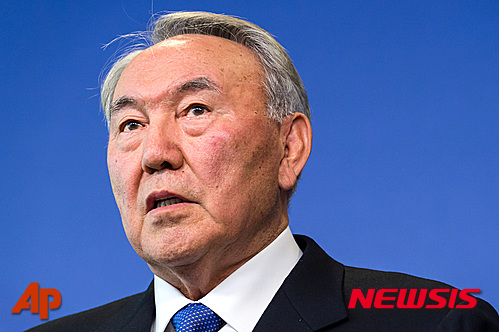
Nazarbayev: Signs of ‘color revolution’ appeared in Kazakhstan
 The recent attacks in Kazakhstan’s city of Aktobe are the signs of a planned color revolution that takes advantage of the country’s liberal governance, Kazakhs President Nursultan Nazarbayev said, Sputnik reports.
The recent attacks in Kazakhstan’s city of Aktobe are the signs of a planned color revolution that takes advantage of the country’s liberal governance, Kazakhs President Nursultan Nazarbayev said, Sputnik reports.
“Taking advantage of our liberal government policies and laws, someone wanted to test the resolve of our government. I am stating that we will always take the harshest measures to suppress extremists and terrorists. The state has all the necessary means for that. We all know that the so-called color revolutions employ various techniques and start with contrived rallies, killings and the desire to seize power. These signs have appeared here,” he said.
He told that militants received instructions from abroad, “According to available data, the terrorist attack was organized by adherents of radical pseudo-religious movements. They received instructions from abroad,” TASS reports.
Aktobe incidents
TASS gave detailed information about Aktobe incidents:
“On June 5, a group of criminals attacked two gun shops and an army unit of the National Guard in Aktobe, a city located 100 kilometers (60 miles) from Russia’s border, the Interior Ministry said. Seven people were killed in the attack, including three servicemen. Thirty-eight people were wounded, the health ministry said.
A total of 13 criminals were killed and 14 others wounded in an anti-terrorist operation. A search for six other suspects is underway. A moderate “yellow” terrorist alert has been declared in all regions of the republic for at least 40 days. The situation in the city is under the personal control of the president.”
Color Revolution Series
Catherine Putz wrote an article about latest incidents at The Diplomat. She evaluates a possible color revolution attempts in Kazakhstan by saying, “In Central Asia, fear of color revolutions drives many government conversations about the rare instances of violence and unrest — that or Islamic extremism. The characterization of the color revolutions in the post-Soviet space in early 2000 is colored by where one stands. In the West, the color revolutions (particularly Georgia’s 2003 Rose Revolution, Ukraine’s 2004 Orange Revolution, and Kyrgyzstan’s 2005 Tulip Revolution) are framed as popular uprisings in response to entrenched and corrupt leaders. In Russia, the color revolutions have been described as a form of subversive warfare–with the implication that the United States, in particular, not just inspires but finances them. In November 2014, Russian President Vladimir Putin warned of the risk: ‘In the modern world extremism is being used as a geopolitical instrument and for remaking spheres of influence. We see what tragic consequences the wave of so-called color revolutions led to.’”


